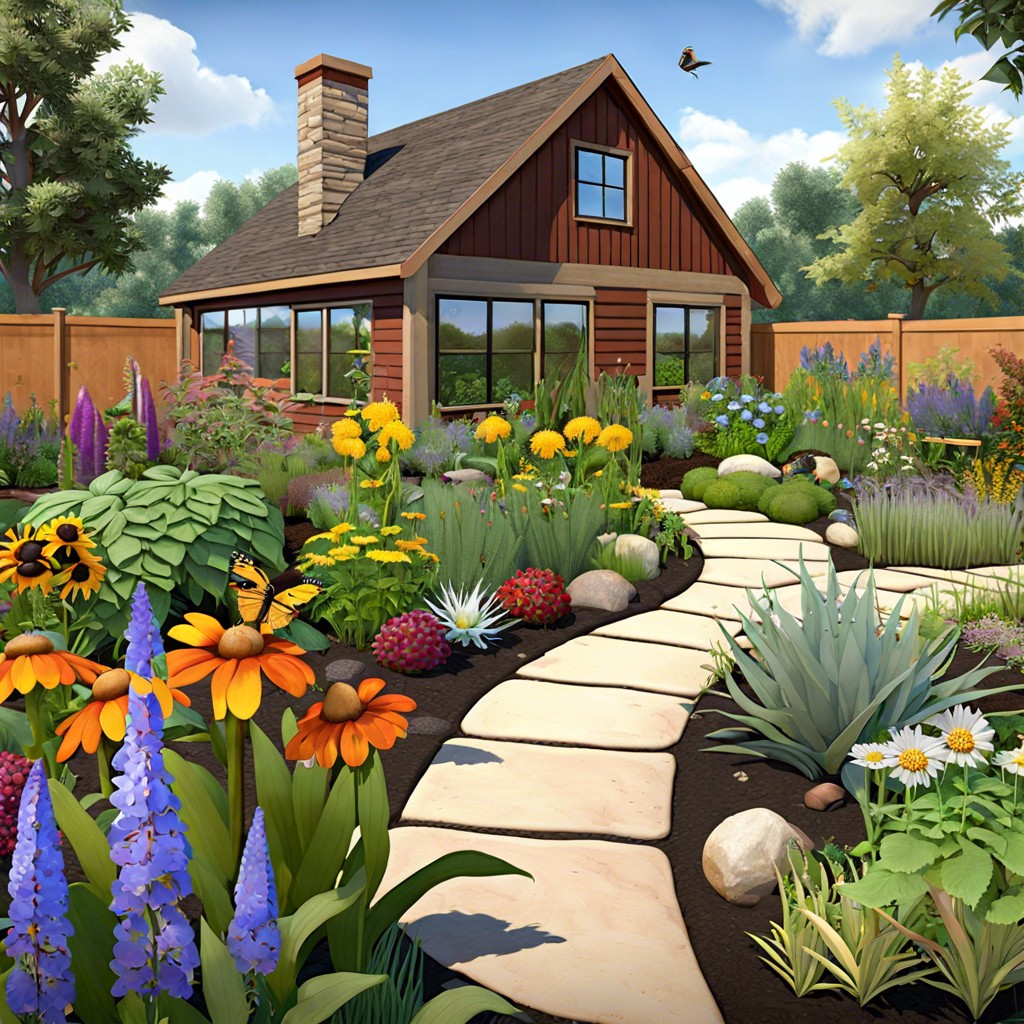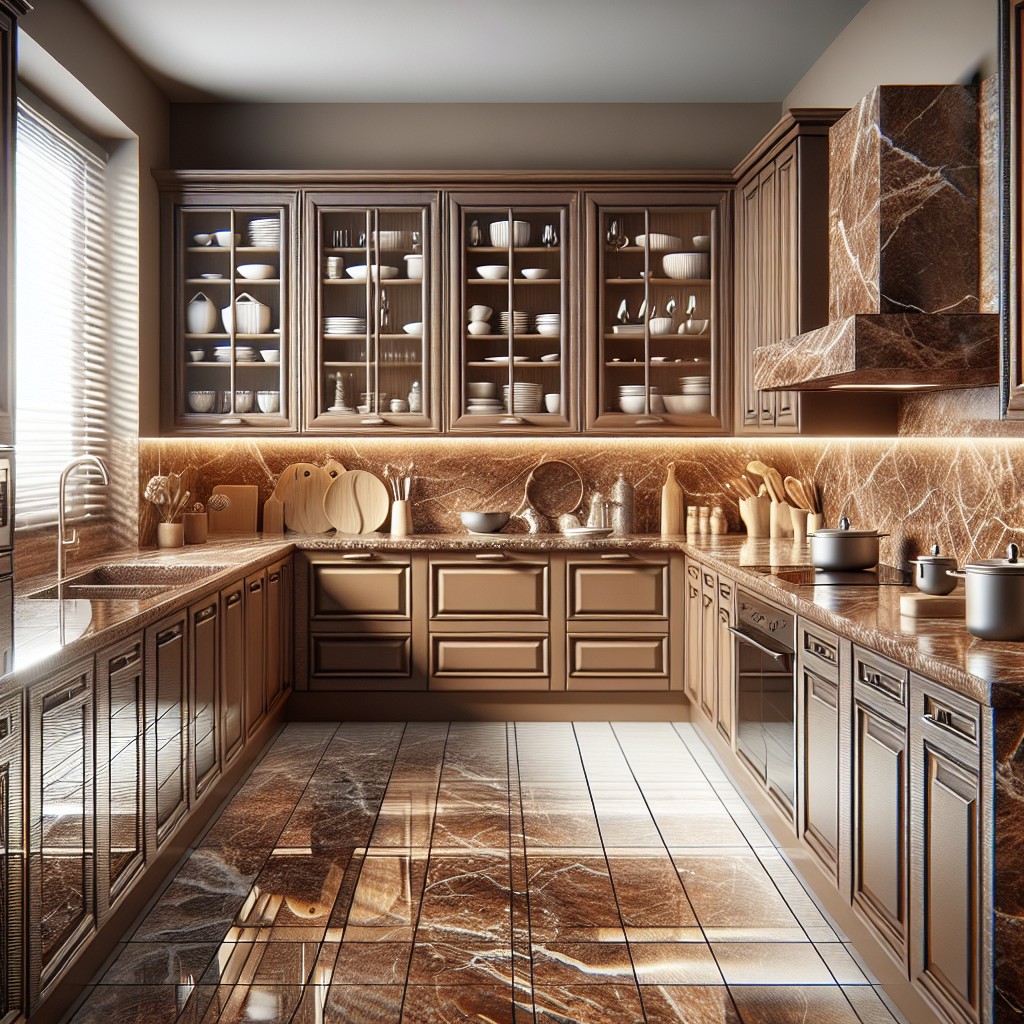Last updated on
Dive into an intriguing exploration of the magnitude of 4000 square feet, translated into relatable real-world contexts and comparisons.
Key takeaways:
- A 4000 square foot space can accommodate a mid-sized suburban home.
- It’s equivalent to the size of two standard tennis courts.
- It could fit a small restaurant or boutique comfortably.
- It’s similar to the size of two combined classrooms.
- 4000 square feet can comfortably hold around 100 guests for a party.
What's Inside
Understanding 4,000 Square Feet in Practical Terms

To grasp the scope of 4,000 square feet, picture a mid-sized suburban home, providing ample room for a family, with several bedrooms, living areas, and outdoor space.
Consider an apartment that’s nearly the size of two standard tennis courts laid side by side.
In a more urban context, this amount of space could encompass a small restaurant or boutique, with enough room to serve a cozy gathering of customers comfortably.
Alternatively, imagine an art gallery where visitors could wander through various exhibits without feeling cramped.
It’s large enough to give a sense of luxury and expansiveness, yet not overwhelmingly vast as to lose the sense of coziness that makes a space feel like home.
Visualizing 4,000 Square Feet Through Everyday Spaces

Picture the familiar space of a tennis court; it’s about 2,800 square feet. Now imagine that area a bit larger, and you’ve got a solid frame for the expanse we’re discussing. If basketball is more your speed, the standard court runs approximately 4,700 square feet; shave off just a little, and you’ve hit our target.
Consider a spacious suburban supermarket aisle – a single one might be around 100 square feet. Imagine walking past 40 of those aisles, side by side, and you’re walking the length and width of our space.
Imagine an average two-car garage, which usually hovers around 400-600 square feet. Stack six to ten of those, and you’ve filled the 4,000 square foot quota.
Comparatively, visualize two classroom spaces combined, as most classrooms are around 900 to 1,200 square feet each, depending on the design and location. You’d only need between three and four classrooms to reach 4,000 square feet—housing a substantial number of students or providing an ample collaborative workspace.
These examples should help cement the scale of 4,000 square feet in your mind, making it more tangible and relatable. It’s a significant area that can provide comfortable living conditions, large workspaces, or generous recreational areas.
Size Comparisons to Sporting Fields and Public Spaces
When grasping the magnitude of 4,000 square feet, sports fields and public spaces are excellent benchmarks. Consider a basketball court; it typically measures about 4,700 square feet. Picture trimming a sliver off the sidelines, and there’s your comparison.
Tennis courts paint a clearer picture. At 2,808 square feet for a single court, imagine a pair of them side-by-side with a bit of space to spare.
Moving on to swimming, an Olympic-size pool spans about 13,454 square feet. Your 4,000 square foot space could snuggly fit just under a third of this aquatic arena.
In the context of public gathering spaces, think of a small community park or playground. These areas often encompass spaces far larger than 4,000 square feet, yet a compact green corner for neighborhood gatherings might align closely with this size.
This size is familiar territory for those who frequent indoor recreational centers or large banquet halls; again, your 4,000 square feet would fit neatly into a corner section of these expansive venues.
Now, with these comparisons in mind, the scale of 4,000 square feet should be much more tangible and easier to visualize.
Typical Dimensions for a 4,000 Square Foot House
When picturing the layout of a home offering a generous 4,000 square feet of living space, various configurations come to mind. Here’s a snapshot of how those dimensions might break down:
1. Classic Rectangular Design: A straightforward design could measure 80 feet by 50 feet. This shape offers a balanced design that suits many suburban lots, providing ample backyard and frontage space.
2. Two-Story Structures: Often, homes of this size will spread over two stories, each covering 2,000 square feet. Picture a footprint of 40 feet by 50 feet, stacked, which can fit comfortably even on narrower lots.
3. Multiple Wings: For more sprawling estates, a single-story home could feature wings or sections branching off a central living area. Each wing might be a rectangle of 1,000 square feet (25 feet by 40 feet), all interconnected.
4. Open Floor Concepts: Inside, an open floor plan with fewer walls could make the space feel even more vast, allowing for a seamless flow between living, dining, and kitchen areas.
5. Room Sizes: Within these dimensions, you’re likely to find expansive master suites upwards of 400 square feet (equivalent to a 20-foot by 20-foot room), while additional bedrooms may range around 200 square feet each.
6. Added Features: With such a substantial footprint, bonus rooms like home theaters, offices, or a gym easily fit without compromising bedroom or living areas.
Visualize these points by walking through an open house or exploring floor plans online to get a true sense of the scale and potential of a 4,000 square foot home.
Living Space Vs. Non-Living Space in Large Homes
When deciphering the layout of a large home, it’s essential to distinguish between living and non-living spaces. Living spaces are areas where day-to-day activities like cooking, dining, resting, and entertaining take place. Think of the kitchen, living room, bedrooms, and dining room.
Non-living spaces, on the other hand, serve functional but not continuous living purposes. These include hallways, storage rooms, and utility areas such as laundry rooms.
In a 4,000-square-foot abode, you’re likely to find expansive living spaces, often with additional rooms such as home offices, gyms, or entertainment centers. Non-living space may account for a significant portion too, offering ample storage solutions without compromising the main living areas’ spaciousness.
Key points include:
- Larger kitchens with islands and walk-in pantries
- Master bedrooms with en-suite facilities and walk-in closets
- Dedicated rooms for specific interests or activities
- Sufficient storage spaces without cluttering living areas
- Utility rooms that can accommodate washers, dryers, and other large appliances
These distinctions within a large home amplify the comfort, privacy, and functionality of the space, allowing residents to enjoy a blend of grandeur and practicality.
Parking and Garage Space in a 4,000 Square Foot Property
Navigating the realm of automotive accommodation in large properties sheds light on functionality and convenience. The average parking space requires about 180 to 200 square feet. Considering this, a 4,000-square-foot property could theoretically cater to 20 standard parking spots, if solely dedicated to this purpose.
In contrast, residential garages tend to be larger, offering extra space for storage and maneuverability. A typical two-car garage spans roughly 400 to 600 square feet. On a 4,000 square foot property, this translates to allocating just 10-15% of the total area to vehicle storage.
For avid car collectors or those with recreational vehicles (RVs), modifying garage dimensions is common. An RV garage might need upwards of 1,000 square feet, still leaving a generous 3,000 for the rest of the living space.
Garages in large homes often pull double duty as workshops or gyms, and factoring in the homeowners’ lifestyle is crucial when planning this part of the property. The flexibility of a 4,000-square-foot area allows for the creation of a multifunctional space that goes beyond the typical use of storing vehicles.
Event Hosting: How Many People Fits Comfortably in 4,000 Square Feet?
Imagine throwing a party in a space as large as a tennis court; that’s the luxury of 4,000 square feet. With such an expansive area, you could comfortably host a soiree for 100 guests, considering the industry standard of 40 square feet per person for a standing cocktail event.
If you’re planning a sit-down dinner, that number shrinks to about 67 guests, given the average allocation of 60 square feet per table of 10.
It’s not just the number of guests that makes the event; there’s also room for a dance floor, a band, or a DJ setup, each typically requiring 100 square feet, 200 square feet, and 100 square feet respectively.
Keep in mind, adding a buffet, bar stations, or lounge areas would also affect the layout. With thoughtful planning, your 4,000 square foot venue can create unforgettable experiences with ease.
The Cost Range for Building a 4,000 Square Foot House
Navigating the financial landscape of constructing a home this size requires understanding several variables that can affect the bottom line. The cost per square foot to build a house can range widely based on location, materials, labor costs, and the level of customization desired.
In more rural areas, the cost can be as low as $100 to $200 per square foot. Conversely, in urban settings or regions with high demand for housing, costs can soar—sometimes reaching upwards of $500 per square foot. Materials play a star role in the budget; opting for standard finishes will keep costs on the lower end, while selecting luxury items and high-end finishes can quickly inflate expenses.
Labor costs fluctuate by region. In areas where skilled labor is in short supply, expect to pay a premium. Additionally, incorporating eco-friendly technology or complex architectural designs can significantly increase the cost due to the specialized expertise needed.
Building permits, inspections, and the potential need for land clearing and preparation can also be significant line items in your budget. Consider these elements when planning your dream home to avoid any surprise costs down the road.
Factoring in all these aspects, the total cost to build a 4,000 square foot home could range anywhere from $400,000 to $2 million or more. Engaging with local builders and obtaining multiple quotes can provide a clearer picture of what a home of this scale might cost in your specific area.
Market Value and Demand for 4,000 Square Foot Homes
The market value and demand for sizable properties like those encompassing 4,000 square feet hinge on a variety of factors including location, design, and the current real estate market trends.
In upscale neighborhoods or bustling cities where land is at a premium, such spaces may command a higher price point. Conversely, in rural areas or regions with less demand for large homes, they could be more affordable.
It’s important to consider the cost per square foot which varies widely by region. For instance, the same area may have a drastically different price in San Francisco compared to Atlanta.
When assessing demand, trends show that there’s a niche market for these homes. Families seeking ample space, remote work professionals looking for an office, or those desiring luxurious amenities often gravitate towards such properties.
However, larger homes often come with higher property taxes, maintenance costs, and can be more challenging to resell as they may exceed the needs of the average buyer.
Investors and buyers must weigh these elements when considering a 4,000 square foot home, understanding that its value is influenced by more than just size. It’s a synergy of luxury, practicality, and market conditions that shapes its worth.
Pros and Cons of Living in a 4,000 Square Foot Home
Living in a large home comes with its unique set of advantages and challenges. Let’s dive into some of the pros and cons you might experience with an expansive 4,000 square foot living space.
Pros:
- Ample Space: You’ll have plenty of room for individual bedrooms, a home office, gym, or even a dedicated guest suite.
- Privacy: Larger homes often mean that family members can have personal spaces, reducing the feeling of being crowded.
- Entertaining: Hosting large gatherings, parties, or family reunions becomes much more manageable when space isn’t a constraint.
- Customization: More square footage usually allows for more creative interior design and customization options to make your home truly your own.
Cons:
- Higher Costs: More space means higher costs in heating, cooling, maintenance, and cleaning.
- Furnishing: Filling a 4,000 square foot home can be costly and might require more effort to create a cozy atmosphere.
- Environmental Impact: Larger homes have a bigger carbon footprint, which may be a concern for the environmentally conscious.
- Less Intimacy: With more space, family members could potentially interact less, leading to a loss of intimacy.
FAQ
How big is a 4000 sq feet house?
A 4000 square feet house typically consists of three to five bedrooms, depending on the desired size of each room, with designs being available therefor from unique, spacious three-bedroom layouts to options accommodating five or more rooms.
How many square feet is a 20×20 building?
A building that has dimensions of 20 feet by 20 feet yields a total area of 400 square feet.
How do you visualize square feet?
Visualizing square feet can be achieved by estimating the number of floor or ceiling tiles within a given space, as they’re typically a foot long, or learning the length of one’s own footstep and using it to gauge square footage.
Is 4000 a big house?
Yes, at 4000 square feet, a house is considered large.
How many rooms can fit in a house with 4000 sq feet?
The number of rooms a 4000 sq feet house can accommodate largely depends on the size of each room, but if each room is considered to be 200 sq feet on average, then around 20 rooms could potentially fit.
What is the comparison of a 4000 sq feet house to a football field?
A 4000 sq feet house is significantly smaller than a football field which typically measures around 57,600 sq feet.
How does a 4000 sq feet area translate in terms of city blocks?
A 4000 square foot area is approximately 0.01 city block, considering the average New York City block measures about 264 by 900 feet or roughly 238,000 square feet.




